Following my previous post on the topic of the Free - Takeoff I want to share with PVP my summary in regard to responses from Golfdane and Volteur and my additional information on both the Free Takeoff and Prejump. The full version with all its photos is too large for a single post so it is made available for downloading as a pdf file. Get the
pdf file here.
I also provide Pole Vault Power with what may be a World first! Namely force platform recordings of a prejump.
However the first prejump officially recorded, using high speed cine - film, was by Lesov of Bulgaria at the inaugural IAAF World Junior Championship held in 1986.
What the force records show is that once the pole contacts the box and is sliding in it, there is some vertical reaction force upwards during the slide and therefore the pole is NOT UNLOADED before contact is made with the rear wall of the box (Peak vertical reaction force recorded during the slide was 137N (about 30.72 pounds force).Similarly, in the so called Free Takeoff the pole, if it is in sliding contact prior to impact with the rear wall of the box, will also experience some vertical loading.
Another important feature to emerge is that the Free Takeoff or the Prejump cannot readily be distinguished unless the recording resolution is at or greater than 100 frames per sec level of photographic resolution. Indeed the human "eye" unless it is biased by expectancy or preconception is unlikely to be able to distinguish Free Takeoff from a Prejump from readily available still or moving images. Time for visual reaction time to an expected event is 180 to about 200 milliseconds, but much longer for an unexpected one. Even knowing what to look for, conscious perception requires much longer viewing time to make an accurate differentiation in real time when viewing actual vaults. Also if you don't know what you are looking for the brain is very accomplished at providing what initially appear to be plausible answers by filling in the gaps in the available sensory input of the viewer.
Also, since pole vaulters capable of performing a Free Takeoff operate in an open loop feedforward mode of motor control, by the time kinaesthetic feedback reaches the vaulter's brain about 60 to 120 milliseconds will have elapsed. That is by the time the vaulter's brain auto pilot becomes aware that the take off was executed correctly the vaulter will have moved on 60 to 100 milliseconds further in time and is by then well advanced in the pole support initial phase. For this reason it is not unreasonable for the vaulter to adopt a strategy of attempting to "Prejump" in order to time the instant of loss of contact of the take off foot to be directly below the top hand in the precise time and spatial location to optimize the final energy input exchange from the vaulter to the pole and at the same time projecting their centre of mass forward and upward i.e. "A prejump can be operationally defined as a slightly prematurely performed Free Takeoff!" The degree of prematurity is in the order of milliseconds only i.e. The sensitivity of the measurement system resolution must be high enough to reliably detect differences + or - 2millseconds (practically and economically feasible). Coaches can and do make the discrimination by filling in the gaps in their perceptual pick up during observation. The accuracy of the analysis I suggest can only be capable of confirmation by using measurement systems of sufficient precision and sampling rate.
I still disagree with Volteur and assert that I perceive Bubka's toe to have broken any effective contact with the ground in Frame 3. I agree that the horizontal location of the toe tip does not change but its vertical location does.
I present some photograpic evidence to show the bending effects of holding a pole with the arms raised and standing on one's toes as to how bending moments operate. These results support Golfdane's suggestion as to localised bending via pressure upwards through the left hand. (note: This is not saying that the left hand is attempting to be actively pushed upwards against the pole.) What I am suggesting is that the reaction to the bending moments is seen as slight pole bend and not necessarily due to impact of the pole with the rear wall of the box).
Following my summary review I present further examples of a Free Takeoff from a Russian analysis of pole vault by a highly respected world famous coach.
I then present PVP readers with some further challenging examples (that may or may not be Free Takeoffs) to consider and finally present force platform recordings showing unequivocal evidence of a prejump.
So that I can sharpen my knowledge and understanding I invite readers to respond and provide their definitions of a). Free takeoff and b)Pre-Jump
I look forward to reading your thoughts on the matter. To ensure clear communication reference to the specific examples, given in the linked PDF file, or any better or clearer examples you can provide would be appreciated.
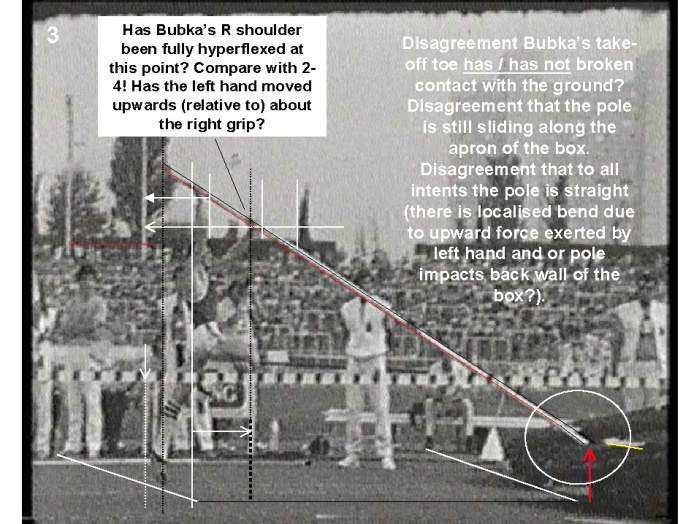
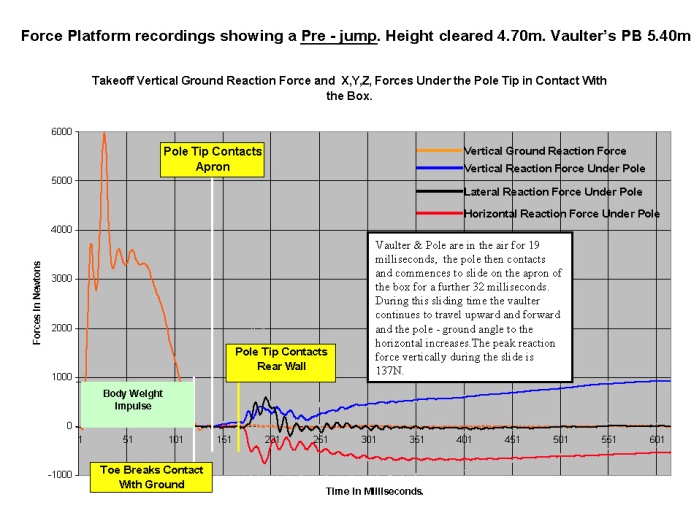
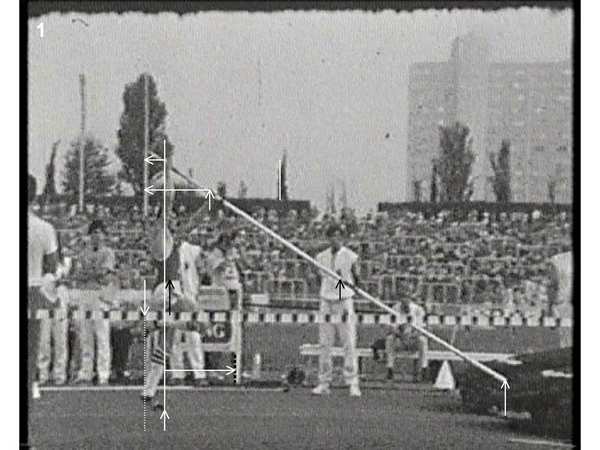
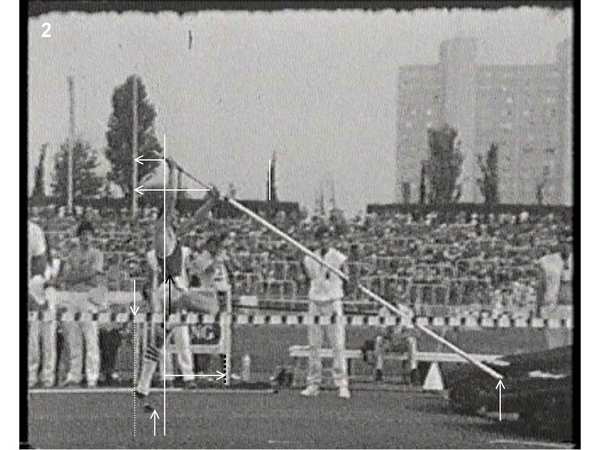
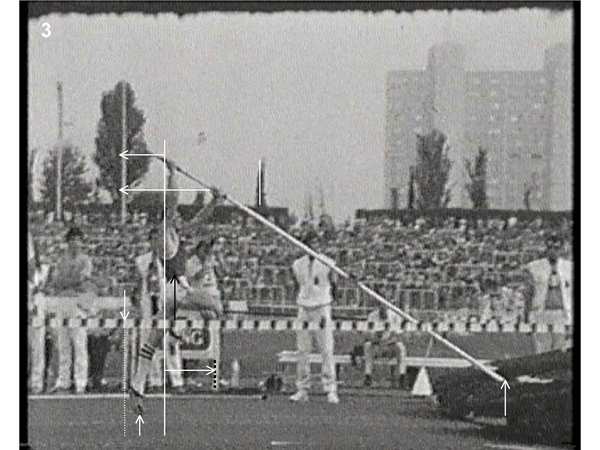
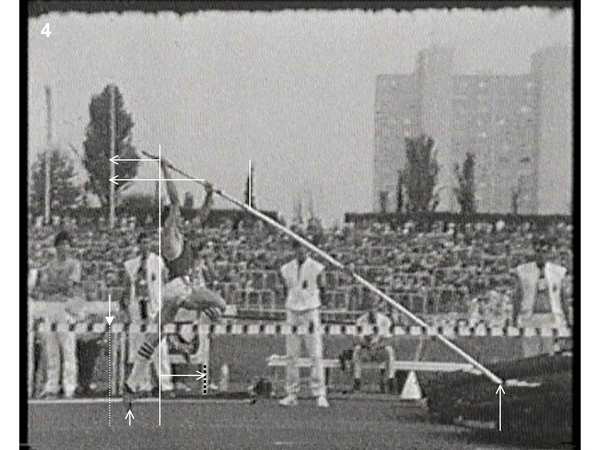


 Outstanding post, PVstudent. Your photo array irrefutably proves Bubka pre-jumped in that sequence, and the shots of other pre-jumpers are intriguing.
Outstanding post, PVstudent. Your photo array irrefutably proves Bubka pre-jumped in that sequence, and the shots of other pre-jumpers are intriguing.
 .
.
